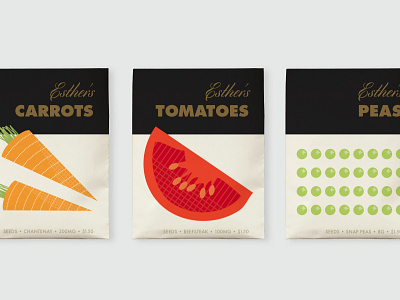Selector of Improbable Mutations
페이지 정보

본문
A paper in the newest Proceedings of the National Academy of Sciences examines in detail how one weed, Amaranthus tuberculatus (waterhemp) developed resistance to a class of herbicides referred to as protoporphyrinogen oxidase inhibitors. PPO is the last, vital enzyme step within the pathway that results in chlorophyll, the inexperienced pigment that permits plants to transform sunlight into more user-pleasant power. Waterhemp’s resistance is exceptional on two counts; First, it includes the lack of not one however two targets for the weedkiller. Secondly, the mutation that delivers resistance is the loss of a complete amino acid in the target. Resistance mutations usually involve a change to a single letter of the DNA code. Waterhemp has misplaced three complete letters, a whole amino acid. A commentary by Jonathan Gressel and Avraham Levy explains the science at a slightly more accessible stage than the waterhemp paper itself, but it surely does far more. It makes plain just how effective agriculture is as "the selector of improbable mutations".
 Selection is a numbers game. Scientists do an experiment. They expose roughly 4 seedlings each from 250,000 parents to herbicide A. Not one -- out 1,000,000 -- is resistant. For a unique herbicide B, about 30 in 1,000,000 are resistant. In the sector too, some ninety five species are resistant to herbicide B. The scientists declare that resistance to herbicide A, by comparison, is very unlikely to happen in the sphere. Gressel and Levy run the numbers. Amaranthus species can dump in excess of 600 million seeds per hectare if uncontrolled. Even with continuous herbicide therapy the seedbank is round 200 million seeds per hectare. Some herbicides are routinely used on more than one million hectares yearly. That’s an experiment on 100,000,000,000,000 seeds a year, give or take. A one in a billion likelihood of a mutation appears negligibly small. Two mutations, one in a billion billion, effectively zero. Nor is that the only instance.
Selection is a numbers game. Scientists do an experiment. They expose roughly 4 seedlings each from 250,000 parents to herbicide A. Not one -- out 1,000,000 -- is resistant. For a unique herbicide B, about 30 in 1,000,000 are resistant. In the sector too, some ninety five species are resistant to herbicide B. The scientists declare that resistance to herbicide A, by comparison, is very unlikely to happen in the sphere. Gressel and Levy run the numbers. Amaranthus species can dump in excess of 600 million seeds per hectare if uncontrolled. Even with continuous herbicide therapy the seedbank is round 200 million seeds per hectare. Some herbicides are routinely used on more than one million hectares yearly. That’s an experiment on 100,000,000,000,000 seeds a year, give or take. A one in a billion likelihood of a mutation appears negligibly small. Two mutations, one in a billion billion, effectively zero. Nor is that the only instance.
Triazine herbicides successfully fry the plant seeds (https://readalltheromance.com/). On a sunny day the herbicide blocks photosynthesis, which ends up in a build-up of energetic oxygen that cooks the leaf. Chlorophyll is packaged into vessels called chloroplasts. Every photosynthetic cell contains many chloroplasts, and each chloroplast contains many copies of the DNA. For a plant to be resistant, each single DNA molecule in every chloroplast in each cell needs to be resistant to triazine. How typically does such a plant arise? To be honest, no one has the faintest clue. Very, very seldom. But typically sufficient that this is the second-most common type of resistance, with not less than sixty five species covering hundreds of thousands of hectares. The repeated use of a herbicide on tens of millions of hectares yearly can do what we're unable to do within the laboratory with greater plants. The PPO inhibitor herbicides have been first commercialised within the 1960s, however they have been by no means as widely used as other varieties, which could also be why resistance took so long to evolve. But now that it has, certainly one of the one ways to regulate waterhemp, especially in soybeans the place it is a major pest, will likely be to make use of glyphosate and soybeans engineered to resist it. How long earlier than waterhemp is resistant to each types of herbicide? That reveals simply six species. Maybe it was a unique weedkiller that I cannot now find. In any case, I have good purpose to return to this as soon as I have found my approach around the International Herbicide-Resistant Weed Database.
Flood fill, additionally known as seed fill, is a flooding algorithm that determines and alters the world related to a given node in a multi-dimensional array with some matching attribute. It is used within the "bucket" fill software of paint programs to fill connected, similarly-colored areas with a distinct coloration, and in video games resembling Go and Minesweeper for figuring out which pieces are cleared. A variant referred to as boundary fill uses the identical algorithms but is defined as the realm related to a given node that doesn't have a selected attribute. Note that flood filling shouldn't be appropriate for drawing filled polygons, as it would miss some pixels in more acute corners. Instead, see Even-odd rule and Nonzero-rule. The traditional flood-fill algorithm takes three parameters: a begin node, a goal color, and a substitute colour. The algorithm appears for all nodes within the array which can be connected to the start node by a path of the target color and changes them to the replacement colour.
- 이전글Roofing Materials: Environmentally Friendly Or Far From Being? 24.10.25
- 다음글오야넷바로가기ヤ 연결 (HD_720)오야넷바로가기ヤ #3d 오야넷바로가기ヤ 무료 24.10.25
댓글목록
등록된 댓글이 없습니다.


